We may receive a commission when you use our affiliate links. However, this does not impact our recommendations.
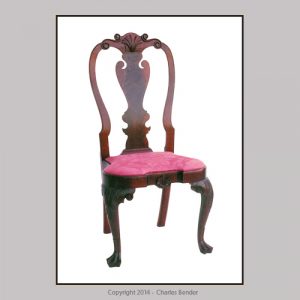 Lots of folks think that back in the day, good quality wood was in such great supply that the craftsmen gave little thought to its judicious use. I have the perfect example to show that they were not only frugal with their use of raw materials, but their time as well; Queen Anne compass- (or balloon-) seat chairs.
Lots of folks think that back in the day, good quality wood was in such great supply that the craftsmen gave little thought to its judicious use. I have the perfect example to show that they were not only frugal with their use of raw materials, but their time as well; Queen Anne compass- (or balloon-) seat chairs.
The back legs (or stiles) extend from the floor to the crest and, above the seat, are shaped in mirrored cyma curves. Many think they are sawn and shaped from the solid, but they’re wrong (in many cases).
To achieve the dramatic curve, 18th century craftsmen started with a piece of 8/4 stock. When they rough cut the the shape on the stiles, the waste material was often glued to the opposite side of the blank. In cases where the waste wasn’t large enough to pack out the leg to get the proper curve, they would go with material from another source (often the remainder of the same plank or log set).
In the photos you’ll see some examples of back legs from chairs in the Winterthur Museum. Although all the backs illustrated have flat stiles, even those that had fully rounded stiles were created in the same manner. But the question that begs asking is, “Why would they make the legs this way when they could have just used 12/4 or 16/4 stock?”
There are several contributing factors as to why. One of the primary reasons is it’s harder to dry 16/4 material than 8/4 (and it takes far less time). With material that thick the center of the plank remains considerably wetter than the outside surfaces for years. Once you cut into them, and start shaping the legs, you’ve exposed those wetter fibers and things will start to move. Using thinner material means you have more stable parts.
Another reason it’s just better to use 8/4 material is milling. The back rail of the chair is tenoned into the legs. You want the surface where the rail and leg meet to be flat. The easiest way to get to that is to mill the plank flat before you cut out the legs. If you used 12/4 or 16/4, you’d have to saw off the waste at the joint, and then mill the area flat. This just isn’t easily done with part of the leg protruding above the plane of the joint. It would take far more time to selectively work this small area to flat than it would to flatten the entire plank and glue on additional material to create the curves.
Lastly, short of using the waste to pack out the legs (which wouldn’t be necessary if you were using extremely thick stock…), you’re creating a ton of useless scrap. And you have to carry that monster plank around and manipulate it within the shop to get the legs sawn out. Everything about using heavy material for legs of this type just screams for a glue up.
While this methodology was readily employed throughout the period, it was not universally so. There are examples where a craftsman used thick stock to create legs of this type; they’re just not as common as the ones that are glued up.
Next time you’re trying to make a curved part, and the only way you can figure to make it is from extremely thick stock, remember that the old guys didn’t always do it that way. A glue up is a perfectly acceptable alternative, particularly when you take the time to match the color and grain so it’s nearly invisible.
Photos courtesy of the Winterthur Museum (except where otherwise noted).
Here are some supplies and tools we find essential in our everyday work around the shop. We may receive a commission from sales referred by our links; however, we have carefully selected these products for their usefulness and quality.



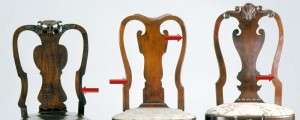
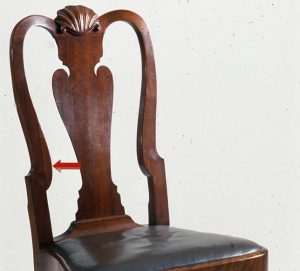
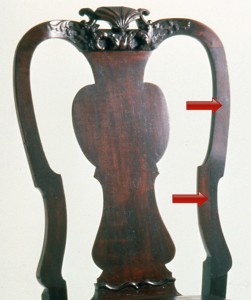





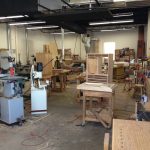
That was really interesting! I wish the pictures were larger so I could study the details
Great post, Chuck. I don’t get to observe much 18th century furniture close up, because the people with name tags get ill when I step over the velvet ropes. I love seeing unexpected, yet clever and intuitive construction details like this.
And by using the waste cutoff from the same leg the color and grain orientation should match very closely. By moving the cutoff from the outside of the leg to the inside of the leg, the growth ring pattern and orientation is maintained, thereby reducing the pattern shift as the leg is shaped or contoured. wise use of stock.